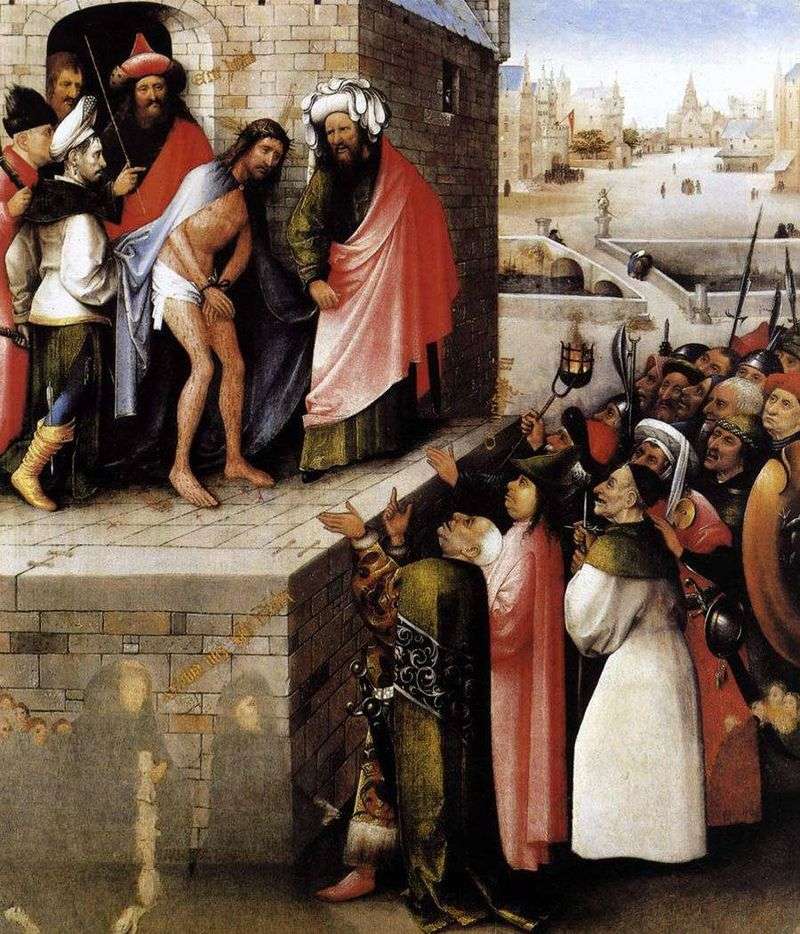
The passions of Christ in all their cruelty are represented in the picture “Ecce Homo”. Bosch depicts the way in which Christ is led to the high podium by soldiers whose exotic headdresses are reminiscent of their paganism; The negative meaning of what is happening is emphasized by the traditional symbols of evil: an owl in a niche, a toad on the shield of one of the soldiers. The crowd expresses their hatred of the Son of God with menacing gestures and terrible grimaces. The exchange of replicas between Pilate and the crowd is transmitted with the help of inscriptions. “Essay homo,” says Pontius Pilate, looking at the bent figure of Christ.
“Cruciflge eum”, – an inscription indicating the response of the crowd rises from below. These words, as well as a brief prayer: “Salva nos XPE redemptor”, emanating from the non-preserved figures of donators, are written in gold. What can this touching detail prove, but not the great piety of the incomprehensible Bosch? Pilate’s palace Bosch places in the landscape of a typical Dutch city: the evangelical legend is clothed in the flesh of a modern artist and a spectator of everyday life. In the foreground, to the left of the crowd, the images of two donators are barely visible, the figures of which were subsequently erased for unknown reasons.
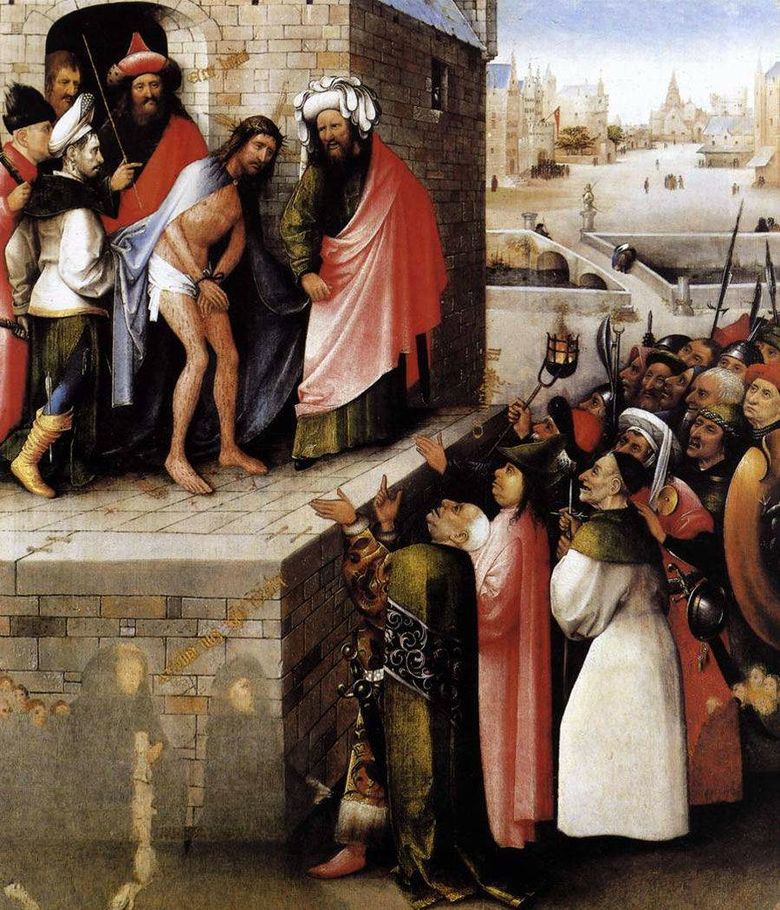 Ecce Homo – Jérôme Bosch
Ecce Homo – Jérôme Bosch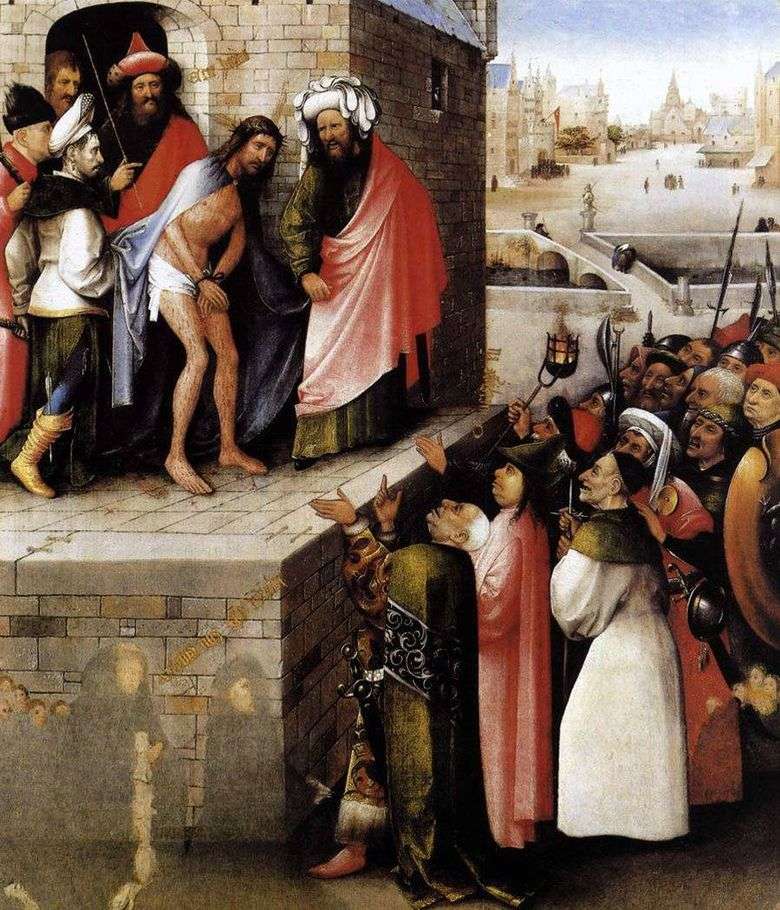 Ecce Homo – Hieronymus Bosch
Ecce Homo – Hieronymus Bosch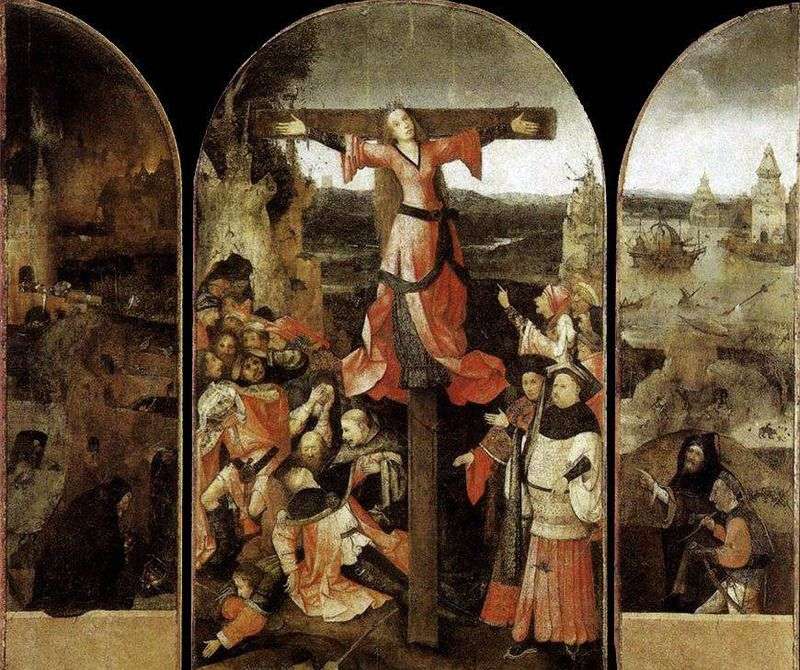 Martyrdom of the Holy Liberty. Triptych by Hieronymus Bosch
Martyrdom of the Holy Liberty. Triptych by Hieronymus Bosch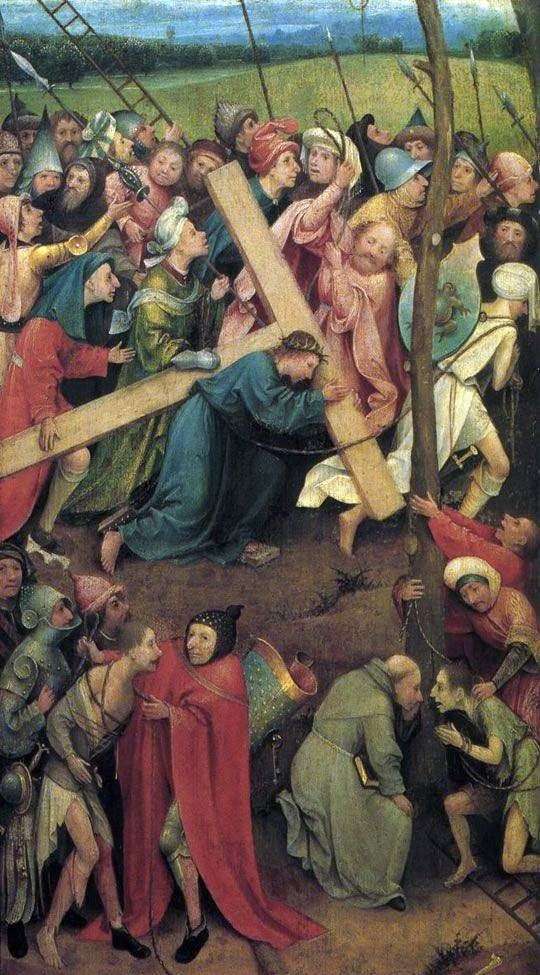 Carrying the Cross on Calvary by Hieronymus Bosch
Carrying the Cross on Calvary by Hieronymus Bosch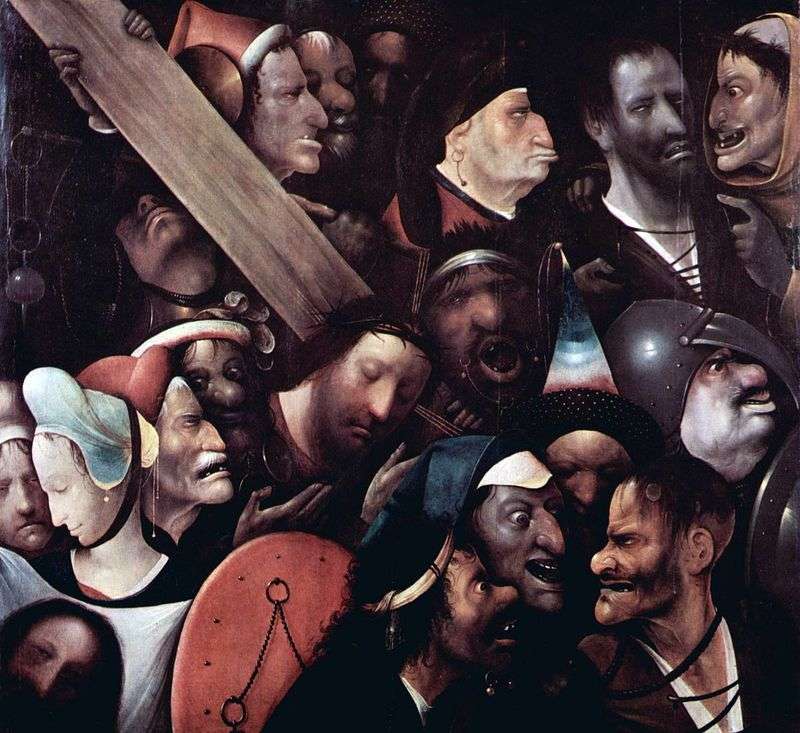 Carrying the cross by Hieronymus Bosch
Carrying the cross by Hieronymus Bosch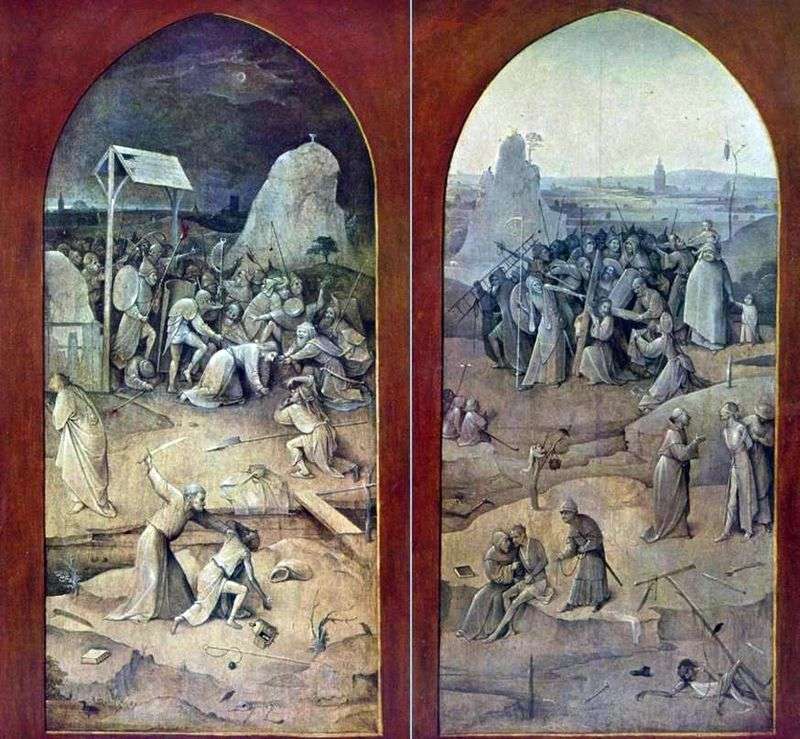 Taking in custody and Carrying the cross. The outer wings of the altar by Hieronymus Bosch
Taking in custody and Carrying the cross. The outer wings of the altar by Hieronymus Bosch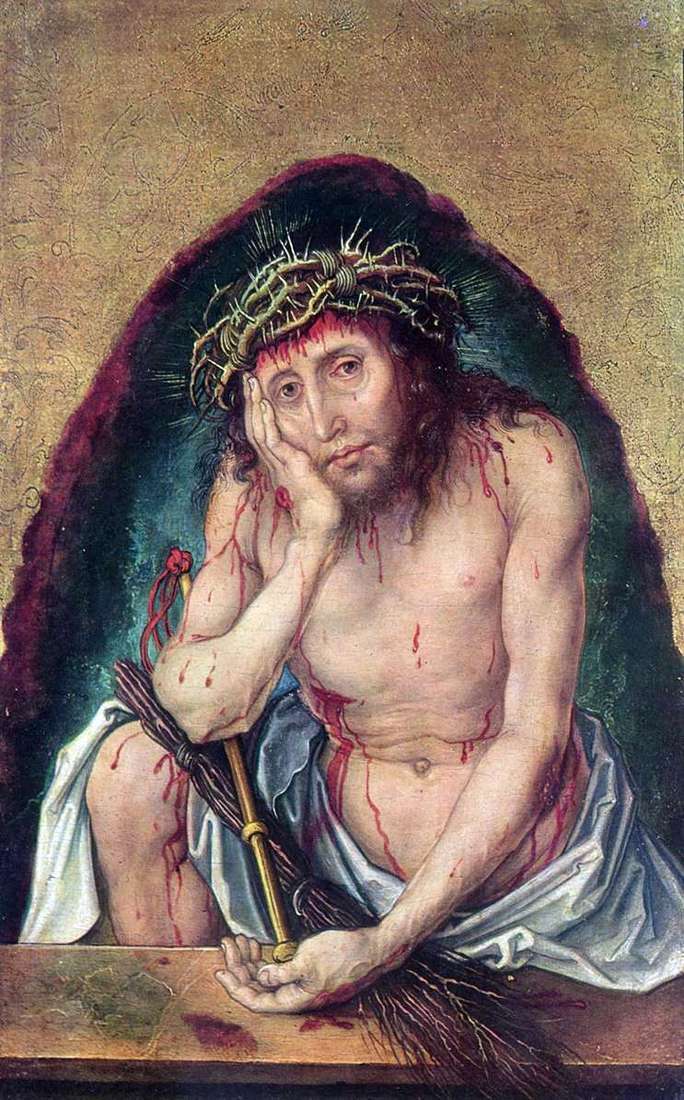 Ecce Homo o He aquí al Hombre!- Albrecht Durer
Ecce Homo o He aquí al Hombre!- Albrecht Durer The Crucifixion of Christ by Hieronymus Bosch
The Crucifixion of Christ by Hieronymus Bosch